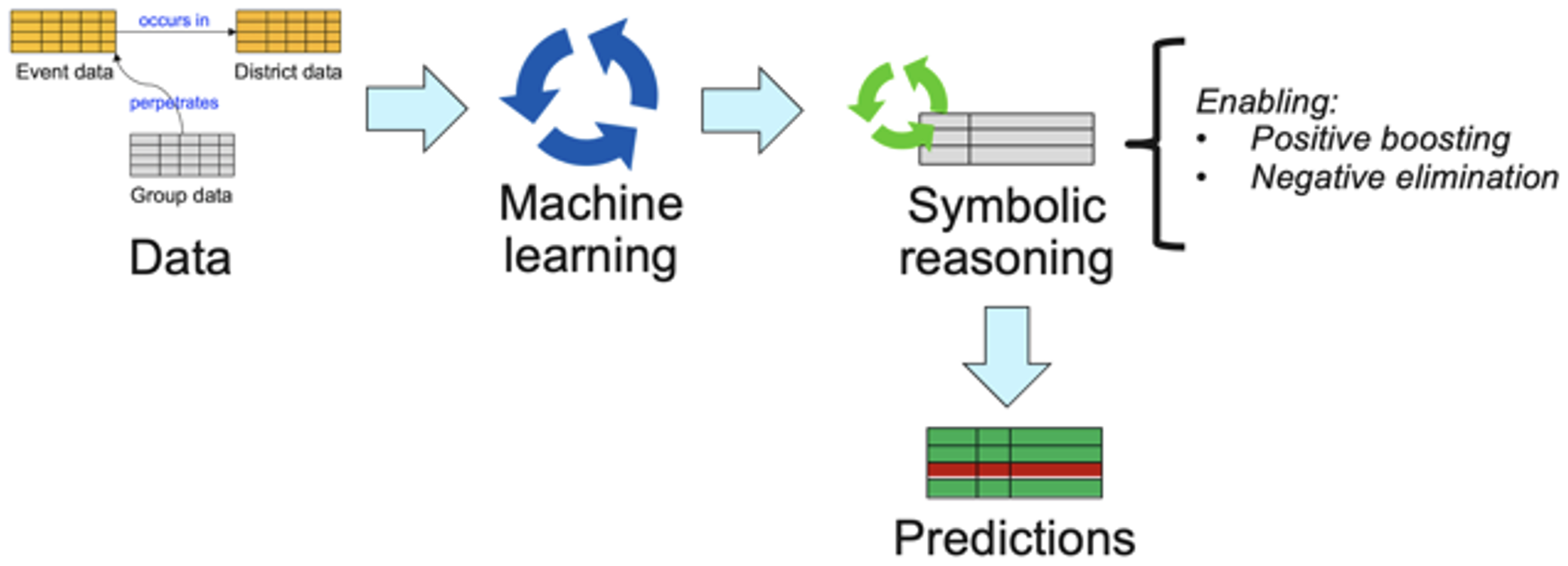Enhancing Situation Understanding through Negative-Ties Enhanced Pipelines
Military / Coalition Issue
Datasets are often focused on positive data, with any negative relationships or knowledge omitted. By explicitly capturing or inferring negative tie information, can we improve artificial intelligence (AI) or machine learning (ML) pipelines by taking into account this additional negative information?
Core idea and key achievements
We investigated terrorism data from the Indian sub-continent that was used in previous research, and identified a number of potential negative ties within that dataset. We defined a processing pipeline to add a symbolic post-processing step to a traditional AI/ML process, enabling the negative-ties information to be used to boost or eliminate results proposed by the core process. We used a combination of data augmentation, by fusing the terrorist event data with related demographic census data, and inference to predict missing values, and to determine the features that most strongly predict the perpetrator of each incident.

We explore the potential for capturing such information from human users in a form that enables integration with the proposed pipeline, using techniques that are possible for less technical users, as well as supporting more technical data analysts through traditional methods such as Jupyter notebooks and Python code.
Implications for Defence
By placing such analytic methods into the hands of intelligence analysts it is possible for them to augment available data sources, both through definition of negative ties, and through inference of missing values. By using explainable methods, we were able to provide insight into the features that most affect the predictions, and highlight those cases that caused most confusion to the system.
Readiness & alternative Defence uses
This work is technology readiness level (TRL) 1/2. The research so far has defined the architecture for the post-processing pipeline in conjunction with any AI/ML model, and explored the potential techniques for the definition of negative tie information. Further research to measure the results both in terms of suitability and performance improvements would be useful.
Resources and references
- Verma, D., Yarlagadda, R., Gartner, S., and Felmlee, D. 2019. Location, location, location: Understanding patterns of terrorism in India (2007-2017), Using Artificial Intelligence Machine Learning. The International Journal of Technology, Knowledge, and Society 15, no. 4 (2019): 23-39.
- Verma, D. C., Gartner, S. S., Felmlee, D. H., Braines, D., & Yarlagadda, R. (2020, April). Using AI/ML to predict perpetrators for terrorist incidents. In AI & ML for MDO Applications II (Vol. 11413, p. 114130G). International Society for Optics & Photonics.
- Enabling rapidly formed human-agent coalition teams through extensible information exchange
Organisations
IBM US, Penn State, IBM UK